We found the Scott Tucker West
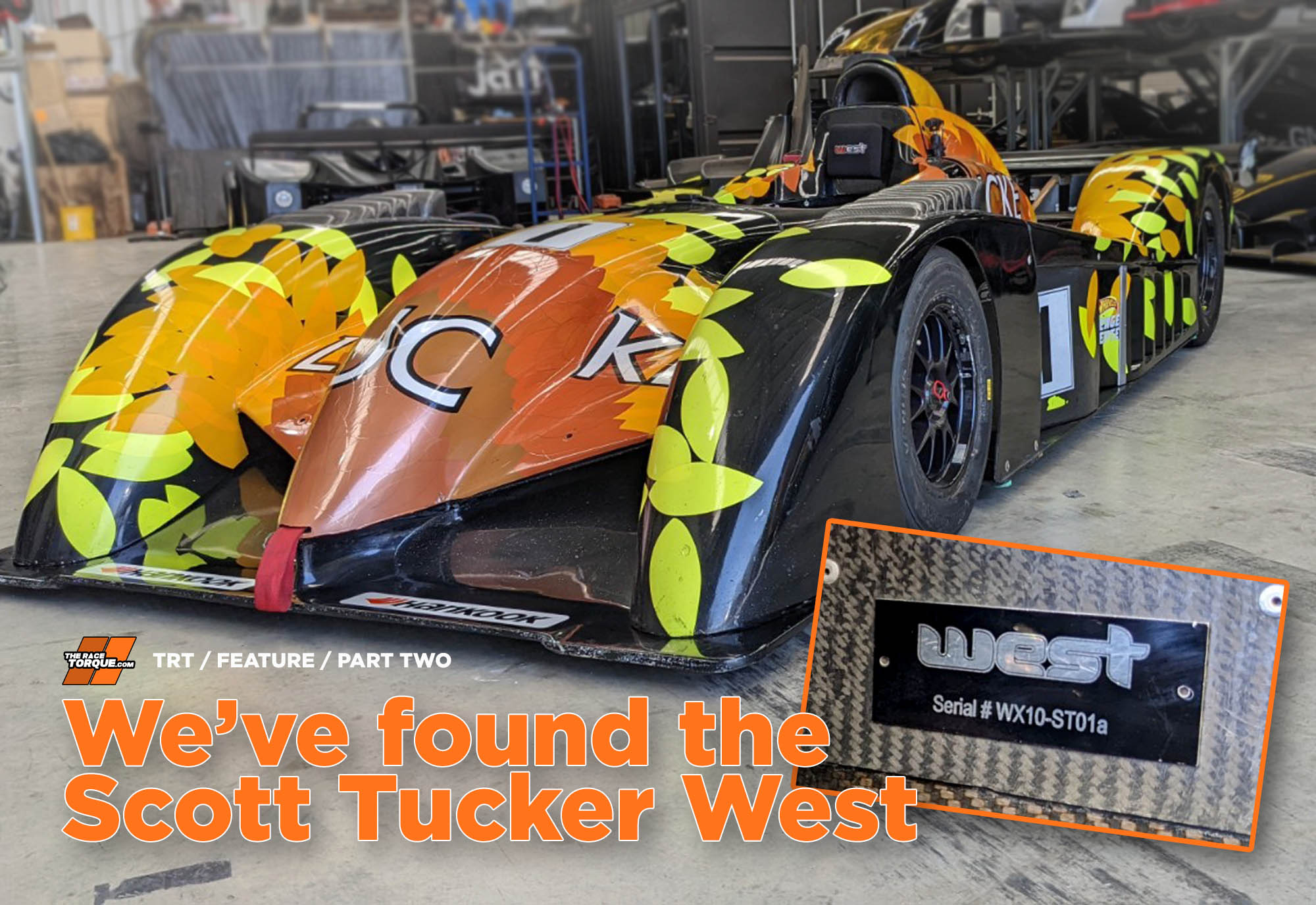
IN PART one of this epic story we recounted the story of businessman, racer and now convicted criminal Scott Tucker and how his Level 5 Racing team set about crushing the opposition at the 2012 Sports Car Club of America Runoffs at Road America.
The team through all the resources in the world and a million-dollar budget at making a little West Sports Racer become the first car in SCCA history to break the two minute barrier at Road America. For a time, it was one of the fastest racing cars in the ‘States: A 675cc Turbocharged, tube-frame Sports Car that was as fast as an LMP 1 Prototype.
Recount the background story by reading part one of the story, and listening to the Dinner With Racers Podcast that inspired it, by clicking here.
However a throwaway line at the end of the podcast really grabbed our attention:
“That car has now been sold to someone in Australia,” Level5 Racing’s Jeff Braun mentioned.
“I don’t know what they’re doing with it. But you could not run that car.”
What with us being Australian and all, and the TRT crew having close links to the local Sports Car scene, that line was more than enough to pique our interest.
So naturally, we went and found it.
As it turns out, this remarkable, historic, controversial and incredible car and its compelling story lives in Tailem Bend.
Just 111 kilometres from TRT HQ.
And it definitely raced on..
GO WEST (OR EAST), YOUNG RACE CAR
WHEN IT comes to West Racing Cars there probably aren’t many people in Australia who know as much about them as Aaron Steer.
A qualified mechanic, Steer learned his trade at Porsche specialists Buik Motorworks in Adelaide, before departing to establish his own race preparation business, Jam Motorsport, with partner Courtney Tyler in 2014.
Prior to establishing Jam – now based at The Bend Motorsport Park – Steer also worked for the factory West Race Cars Australia firm, both running cars and, at times, driving them successfully.
It is there where he first came across a particularly special car that had landed from the United States.
“One of our customers, Mark Laucke, was looking for a car in time for the 2013 season and there wasn’t much around, West USA couldn’t source a car,” Steer remembered as we spoke at Jam’s impressive facility just behind The Bend’s massive pit building.
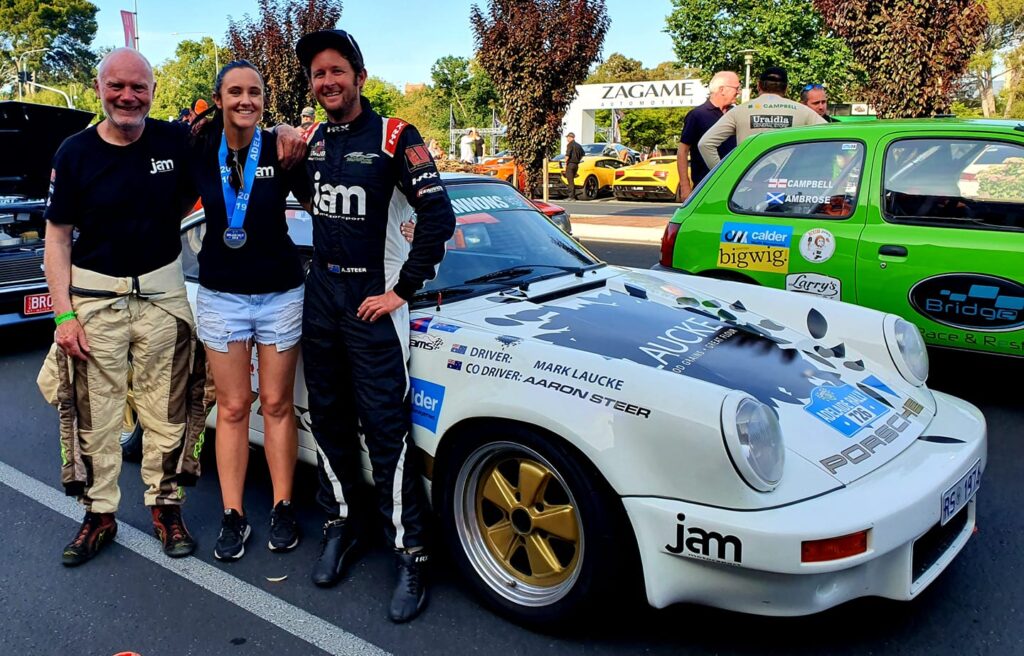
PHOTO: Facebook
To our right Sports Cars, Wests, Wolfs and others, are stacked in rows three cars high. They loom over the conversation. One of them, though, is special.
Laucke, the owner of longstanding Adelaide-based business Laucke Flour Mills, was a keen and successful amateur racer and had won the 2010 Sports Racer series in his existing West WR1000.
“Mark desperately wanted a new car but there wasn’t anything around so when this one presented itself – and we were very aware of its history and what it had achieved – we jumped at it and got it to Australia for Mark to drive. It landed pretty much as it finished the runoffs.
“I knew everything about the car and was following along as they built it, they were sending me pictures as it came together. I definitely knew what it was and what it had achieved.”
The car arrived pretty much ‘as raced’ in the United States by Level 5, meaning it was way beyond what the then Sports Racer Series – later to become the Australian Prototype Series – would allow.
While the series was based around the similar D-Type Sports style racers as used in the ‘States, the formula was heavily restricted to ensure affordability and accessibility.
Basically, that meant a lot of the trick components on the Scott Tucker West wouldn’t pass muster here and the car was retrofitted to suit the Aussie conditions.



PHOTOS: Nathan Wong
But there was no doubting that what had arrived was far beyond what came in the standard West Sports Racer box when purchased new.
“It was clear that this was an extreme version of what the West originally was,” Steer explained. “You could tell that it wasn’t a car that was not designed to be reproduced, like the standard Wests were. It was clearly hand-built with lots of little details that made it a long way from the ‘spec’ car.
“The engine and the plumbing was amazing, and the ducting. They clearly spent a lot of time doing underbody CFD (Computational Fluid Dynamics) to see how the airflow moved through the chassis. That looked insane, how they tidied all that up.
“The car wasn’t the sort of car you could get one person to run, like we do with a West normally. These days I have one or two people per car but this clearly needed seven or eight. It was like an LMP2 car that was designed to last 30 minutes. There was no way that we could race something that ridiculous here.”
So while the car arrived in post-runoff specification, it never raced in Australia in that extreme level of tune.
The motorsport industry is rife with people selling racing cars that look pretty on the surface, only to be far from what was promised on the inside when it comes to getting on track – some of them intentional, some of them not.
While this was definitely the latter, there was no way West WX10-ST01a was going to fire in its full-blooded, runoff-winning specification.
“The engine that did the runoff was in it, and it wasn’t even good for a single start,” Steer confirmed.
“They had race engines and qualifying engines, there was a bank of them which are somewhere out there, that haven’t been used, I think there’s two left, but no one knows where they are.”
AUSSIE SPEC
AS THE West Race Cars Australia team began converting the car to a somewhat less-extreme ‘spec racer’ specification, the first challenge came with the differential housing.
In the Tucker West this was naturally an extreme interpretation of what the usual chain-drive unit was in the more standard cars; the Level 5 racer featuring a custom designed and built Carbon Fibre unit, designed to be super rigid and super light, not to mention super expensive.
Steer detailed the process: “We got a new casing cast, which basically replicated the carbon fibre one but made out of cast aluminium so it was compliant with the regulations. It was made in the US but followed the Carbon fibre one closely so it looks the same.”
All the Carbon in the car was the biggest thing that changed between how it raced in America and before it turned its first laps Down Under – in what was the then correct West WX-10 specification.
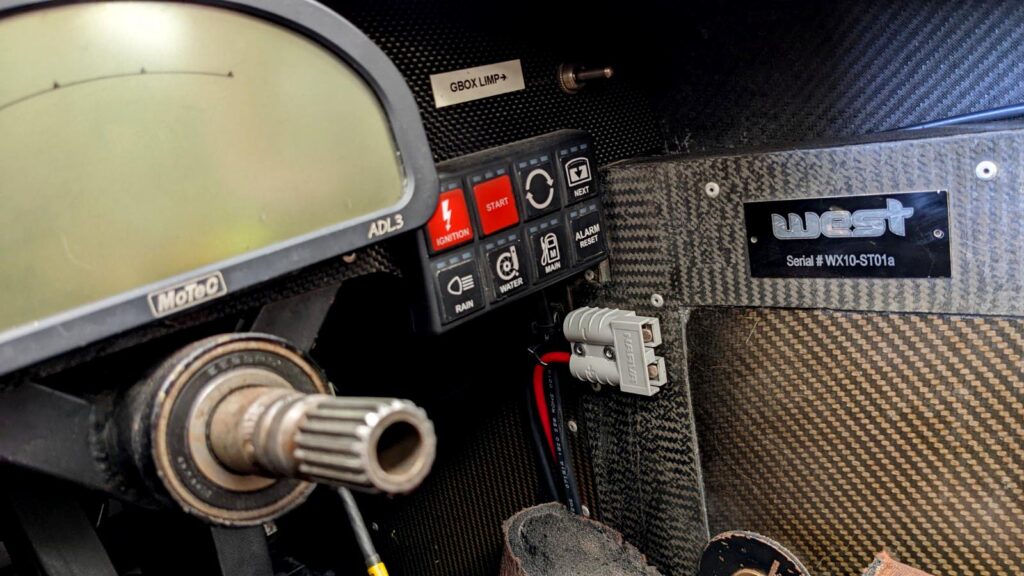
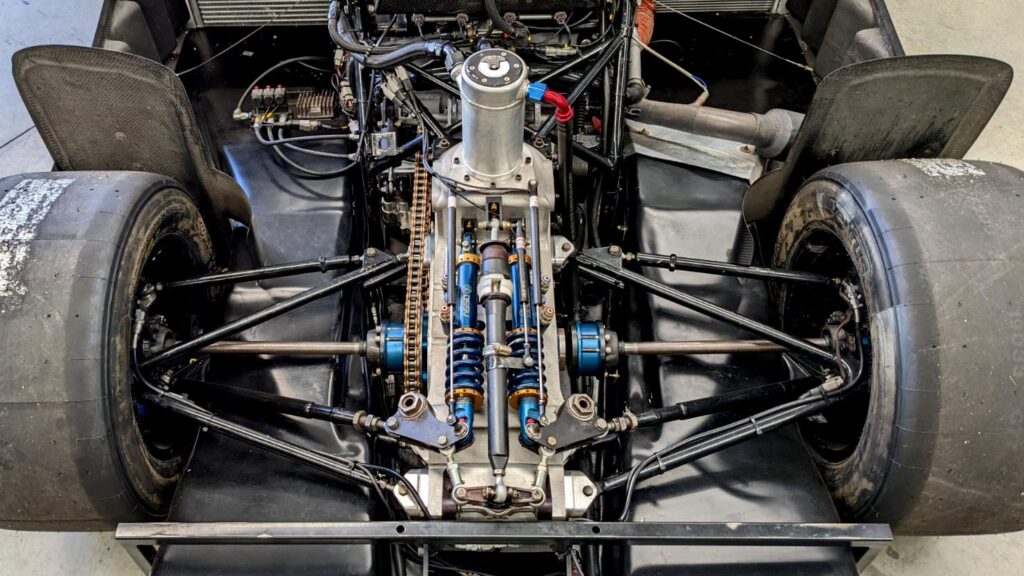
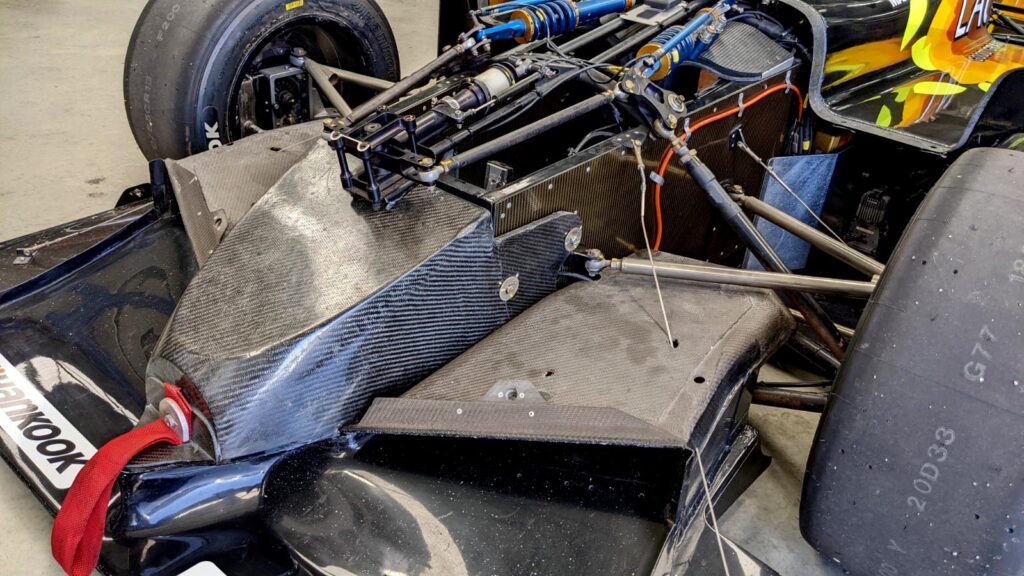
PHOTOS: Richard Craill
“The gearbox casing, the wing mount post assembly, the rear parts of the chassis all had to be remade because it was all Carbon Fibre. All the cooling system had to change, the plumbing and the wiring. It was a pretty hefty conversion.
“I had to modify some of the bodywork as well. There was a turbo-specific intake on the side that had to go, that was a bit of a mission.”
While there was wholesale change to the rear of the car, the front was different: the front of the chassis, the front suspension and brakes – sans the expensive Carbon rotors used by Level 5 – remained.
Of course, the powerful but fragile turbocharged engines were set aside for a return to the more user-friendly off the shelf Motorcycle-sourced Kawasaki ZX-10 engine used by a majority of the Aussie-based Wests.
Regardless, when the car first hit the track in Australia it was still clear that this wasn’t your standard, off-the shelf West WX10.
“I drove it a couple of times and it was noticeably different compared to the other West’s around,” Steer confirmed.
“It handled very well. It was so smooth and the high-speed stuff was great. The bodywork was really rigid, it was just a better car. You can feel all the little bits a team does when you can afford to do it that makes a tiny little difference, but it all adds up.”
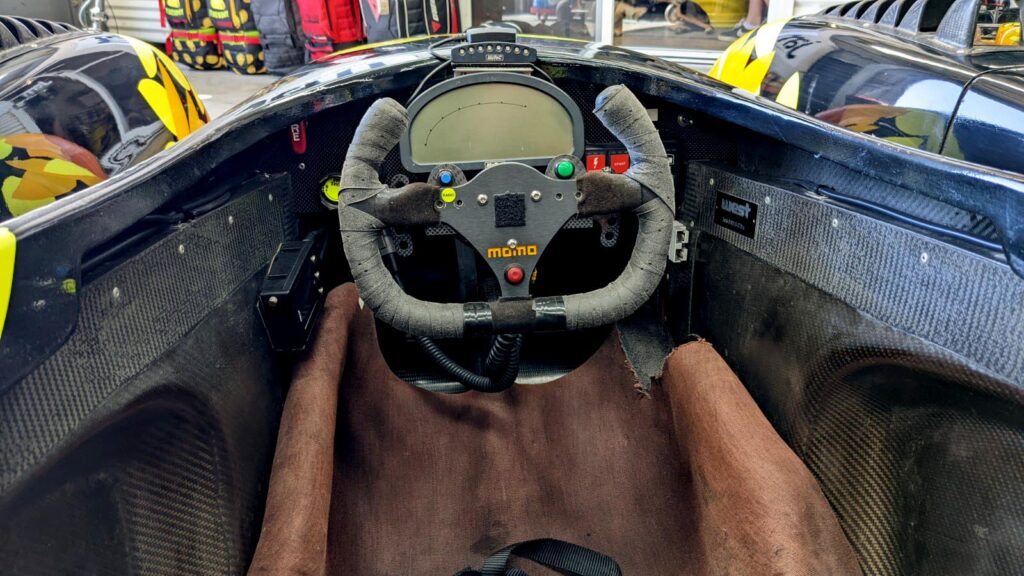
PHOTO: Richard Craill
It added up for Laucke, too: In the South Australian’s hands the car won both the 2015 and 2017 Prototype Series championships, remaining competitive despite the series gradually evolving to a place where it began to accommodate more international style CN Prototypes, including the all-carbon Wolf GB08 and similar varieties.
Ultimately Laucke, too, upgraded to the later machines; relegating WX10-ST01a to the sidelines in the Jam Motorsport Garage.
However, when it did race, it was clearly the pick of a competitive bunch.
“The car is fast,” Steer confirmed.
“Once we had dialled in all the suspension for the different weights, because he’s slightly heavier and all that stuff, it was clearly a standout car. In the older cars you’re working your ass off to get a result and the car is constantly moving around all the time when you’re driving. This thing is just solid and it’s very different driving it.
“It’s got more data than any of the other cars, in fact it’s probably got more data than anything in our workshop at the moment except maybe his (Laucke’s) Wolf.”

PHOTO: Nathan Wong
The amount of information at hand, via the car’s onboard Motec ECU, is another sign of the extremes to which Level 5 went in developing a class-killer in their bid to win the 2012 Runoffs.
Added Steer: “It’s even got tunnel vacuum sensors under the car and it’s quite interesting setting up the car using all that stuff.
“While they were developing it, they ran pitot tubes on the car and all that kind of stuff to gather data, and they’d take it off when it was time to race. It’s pretty cool.”
POSTSCRIPT
THE WEST RACE CARS build plate, and the chassis identifier of ST01a on it, identifies Laucke’s car as the Tucker West – the one called Bronco – that so dramatically and dominantly won the 2012 SCCA runoffs at Road America.
It is absolutely the car and as such is a very unique piece of racing history, not just because of its achievement in winning the event but also in the way it came to be and even the notoriety of its initial owner.
The sister car, ‘the Mule’, found its way to Bogota, Columbia.
Images posted in late 2013 to the West Race Cars Facebook page show the car undergoing testing for a local race, with added improvements like headlights gearing it for night running.




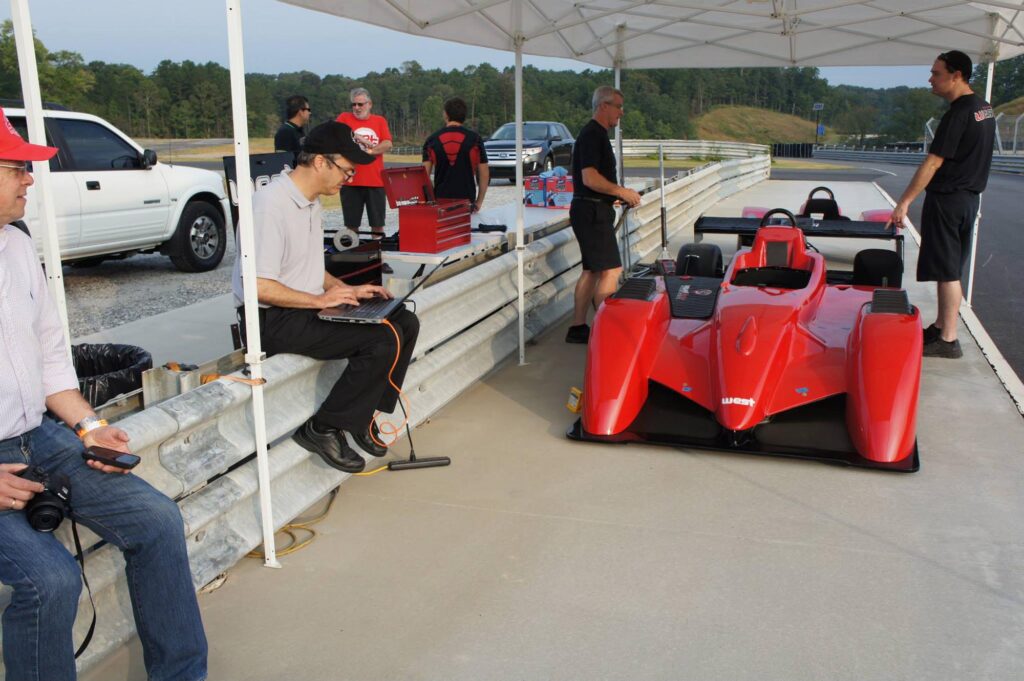

PHOTOS: West Racing Cars Facebook Page
The last we know of the car was that it was due to compete in a six-hour race in December that year – with then IndyCar racer Carlos Muñoz listed as one of the drivers.
The car retained the turbocharged power, the carbon gearbox and several of the other tricks that Level 5 had worked so hard to develop.
It is at that point the trail runs cold on The Mule – though we are searching – but at least we know where one of the most ambitious projects in the sport’s recent history has ended up.
Bronco sits on a steel rack in a workshop at The Bend Motorsport Park in Adelaide, South Australia.
Just waiting for the next chapter of it’s relatively unknown, yet undoubtedly incredible story to be told.
Special thanks to the team at Jam Motorsport, especially Aaron Steer and Courtney Tyler, for their support in piecing together this feature.
Jam do great work and we’d heartily recommend you check out their website and social channels here.
Thanks also to the outrageously brilliant Dinner with Racers Podcast for being just about the best racing podcast around, and for not editing out Jeff Braun’s ‘the car was sold to Australia’ comment.







